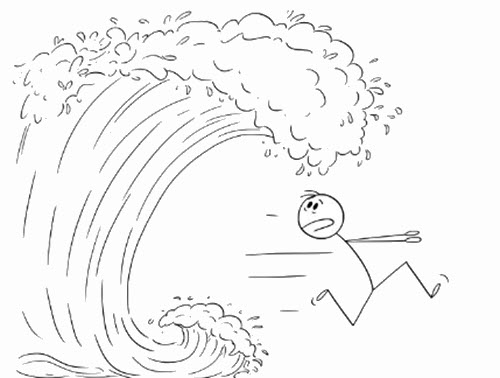Staying Ahead of the Curve

Ever meet people who are so ahead in their thinking and action that it feels like they’re surfing the curve while you’re still figuring out how to swim?

That’s how I felt a number of years ago when I was invited to attend a gathering of futurists in Washington, D.C. It was there I met a futurist who suggested I pay attention to the importance of what he called ‘early’, ‘edge’ or ‘weak’ signals. He explained that these are subtle hints or initial signs of change that emerge before a pattern becomes widely recognized as a trend, like the early popularity of smartphones among tech enthusiasts before they became mainstream.
My question to him was: “If they are early or weak signals, why do we even need to pay attention to them? Aren’t trends more important?”
He clarified that while trends represent broad, established shifts validated by research, early signals offer the first indications of change. This allows for proactive action before the mainstream catches on and a pattern becomes established as a trend. Unlike a trend, an early signal is often weak or speculative, offering just a glimpse of an emerging possibility that could lead to significant future changes.
Early signals can be identified in various ways. For me, it has become about making time to pay attention to the media and systematically reviewing new ideas and information through training sessions, blogs, interviews, Google Alerts, casual observations, and conversations.
I’ve learned it’s especially important to connect with those from other disciplines or those who might even annoy you. Why? Because they are often the ones from whom you learn the most.
All of these strategies are typically augmented by intuition—a gut sense of knowing. Sometimes, this intuition has guided my decisions and insights, even when risks were involved. Often, I couldn’t fully explain why, like the time I quit my job and moved across the country for a one-year contract. Many thought it was crazy, but as it turned out, that one-year contract turned into eight years.
Ultimately, though, spotting early signals is mostly about staying receptive to new ideas, even when your mind feels like it’s juggling puzzle pieces that don’t quite fit together yet.

Next entry: Where’s the Moonshot???
Previous entry: From Bystanders to Builders: How to Shift the Power In Community Planning

 Brenda Herchmer is the owner of Grassroots Enterprises, a community development consulting company.
Brenda Herchmer is the owner of Grassroots Enterprises, a community development consulting company.